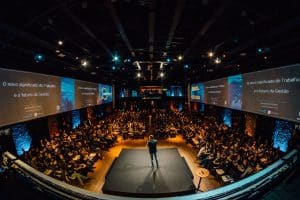Definition of Generation Gap
The term “generation gap” refers to the differences in opinions, values, attitudes, beliefs, and lifestyles between people of different generations. It is the lack of understanding and communication that exists between people who are born in different time periods. The generation gap can be seen among family members, friends, coworkers or any other groups of individuals.
One of the primary reasons for the generation gap is the difference in upbringing and life experiences. Each generation grows up with a unique set of cultural norms and societal expectations that shape their worldview. For example, older generations tend to value discipline, hard work and responsibility while younger generations prioritize creativity, individuality and self-expression.
To bridge this gap in communication requires an open-minded approach from both sides. Younger generations should learn to appreciate the wisdom and experience of older generations while also expressing their own ideas respectfully. Older generations should embrace new thinking patterns while still holding on to traditional values that have served them well over time. Through mutual respect and understanding we can all learn from each other regardless of age difference or background.
Prevalence: Common Differences
In today’s diverse workforce, it is common to encounter communication differences among generations. Baby boomers, Generation X and millennials have different work styles, values and expectations that can cause misunderstandings. For instance, older generations tend to prefer face-to-face interactions while younger ones favor digital communication such as email or messaging apps.
Another significant difference is the use of jargon or buzzwords in the workplace. While baby boomers may not be familiar with modern slang terms, millennials might use them frequently. This can lead to a lack of clarity and confusion in communication.
Moreover, the approach to feedback also differs among generations. Older employees may view criticism as a personal attack while younger workers are more open to constructive feedback. Understanding these common differences in workplace communication enables individuals across all ages and backgrounds to bridge the generation gap effectively.
Knowledge: Developing Understanding
In order to bridge the generation gap in communication, it is important to develop a deep understanding of each other’s perspectives. This involves gaining knowledge about the backgrounds and experiences that shape each generation’s values, beliefs, and communication styles. By developing this knowledge, individuals can better appreciate and respect their counterparts from different generations.
One effective way to develop understanding is through open dialogue and active listening. Each generation should be given the opportunity to share their thoughts and experiences without judgment or interruption from others. By actively listening with an open mind, individuals can gain insight into why certain generations may have differing views on topics such as technology or work ethic.
Another helpful tool for developing understanding is education. Older generations can benefit from learning about new technologies or social trends that younger generations are familiar with, while younger generations can learn about historical events or cultural traditions important to older generations. This exchange of knowledge not only promotes understanding but also fosters a sense of unity and connection between different age groups.

Skills: Learning & Adapting
In today’s fast-paced world, communication is essential for effective teamwork and building relationships. However, with different generations working together in the workforce, there can be a gap in communication that needs to be addressed. One way to bridge this gap is by developing skills in learning and adapting.
Learning new technologies and methods of communication is crucial for staying relevant in today’s digital age. The younger generation may already be familiar with the latest tools and software, but older colleagues may need additional training or support to keep up. On the other hand, older workers bring experience and a wealth of knowledge that can benefit younger team members.
Adapting to different communication styles is also important when working across generations. Younger workers may prefer instant messaging or social media platforms while older coworkers might prefer phone calls or face-to-face meetings. Being able to adapt your communication style based on who you are speaking with will ensure that everyone feels heard and understood, regardless of their age or background. By cultivating these skills of learning and adapting, we can bridge the generation gap in communication and work more effectively as a team.
Technology: Utilizing Tools
In today’s digital age, technology has become an integral part of our daily lives. From smartphones and laptops to video conferencing tools and instant messaging apps, we rely on these tools to communicate with each other, regardless of age or location. However, there is still a gap in communication between different generations.
To bridge this gap, it is essential to utilize technology effectively. Firstly, it is important to understand the preferred methods of communication for different generations. While younger generations may prefer instant messaging or social media platforms like Facebook and Instagram, older generations may prefer phone calls or emails.
Secondly, utilizing user-friendly tools can also help bridge the communication gap. For instance, using a video conferencing tool like Zoom can enable multiple generations to connect face-to-face virtually from anywhere in the world. Similarly, utilizing language translation apps can also assist in overcoming language barriers.
Finally, embracing new technologies and encouraging inter-generational learning experiences can further enhance communication skills across all ages. By creating an open dialogue around bridging the generation gap through technology utilization, we pave the way for more effective and inclusive communication practices for years to come.
Interaction: Connecting Across Gaps
As technology continues to evolve, the gap between generations has become more apparent in communication. The way older generations communicate is vastly different from younger ones, and this can lead to misunderstandings and frustration. However, by understanding these differences, we can find common ground and bridge the gap.
One way to do this is by being aware of our own communication styles and adapting them when necessary. For example, older generations may prefer face-to-face conversations or phone calls over texting or social media messaging. On the other hand, younger generations may feel more comfortable expressing themselves through digital platforms. By being open to different forms of communication, we can create connections across generational gaps.
Another important aspect of bridging the generation gap in communication is listening with empathy. This means actively trying to understand where someone is coming from rather than dismissing their perspective based on age or experience. By acknowledging each other’s unique worldview and experiences, we can find common ground and build stronger relationships based on mutual respect and understanding. Ultimately, interaction that bridges gaps requires open-mindedness, patience and a willingness to learn from one another regardless of age or background.
Conclusion: Closing the Gap
To conclude, bridging the generation gap in communication is not an easy task, but it is possible. It takes effort and understanding from both sides to make it work. Through active listening, open-mindedness, and empathy, we can learn to communicate effectively with people from different generations.
It’s also important to recognize that each generation has its own strengths and weaknesses when it comes to communication. Baby Boomers may excel at face-to-face interactions while Millennials may be more comfortable with digital communication. By embracing these differences and finding ways to complement each other’s strengths, we can bridge the gap in communication.
Ultimately, closing the gap in communication between generations will benefit everyone involved. It will lead to better understanding, stronger relationships, and a more cohesive workplace or community. So let’s make an effort to break down generational barriers and work towards a future where effective communication knows no age limit.



